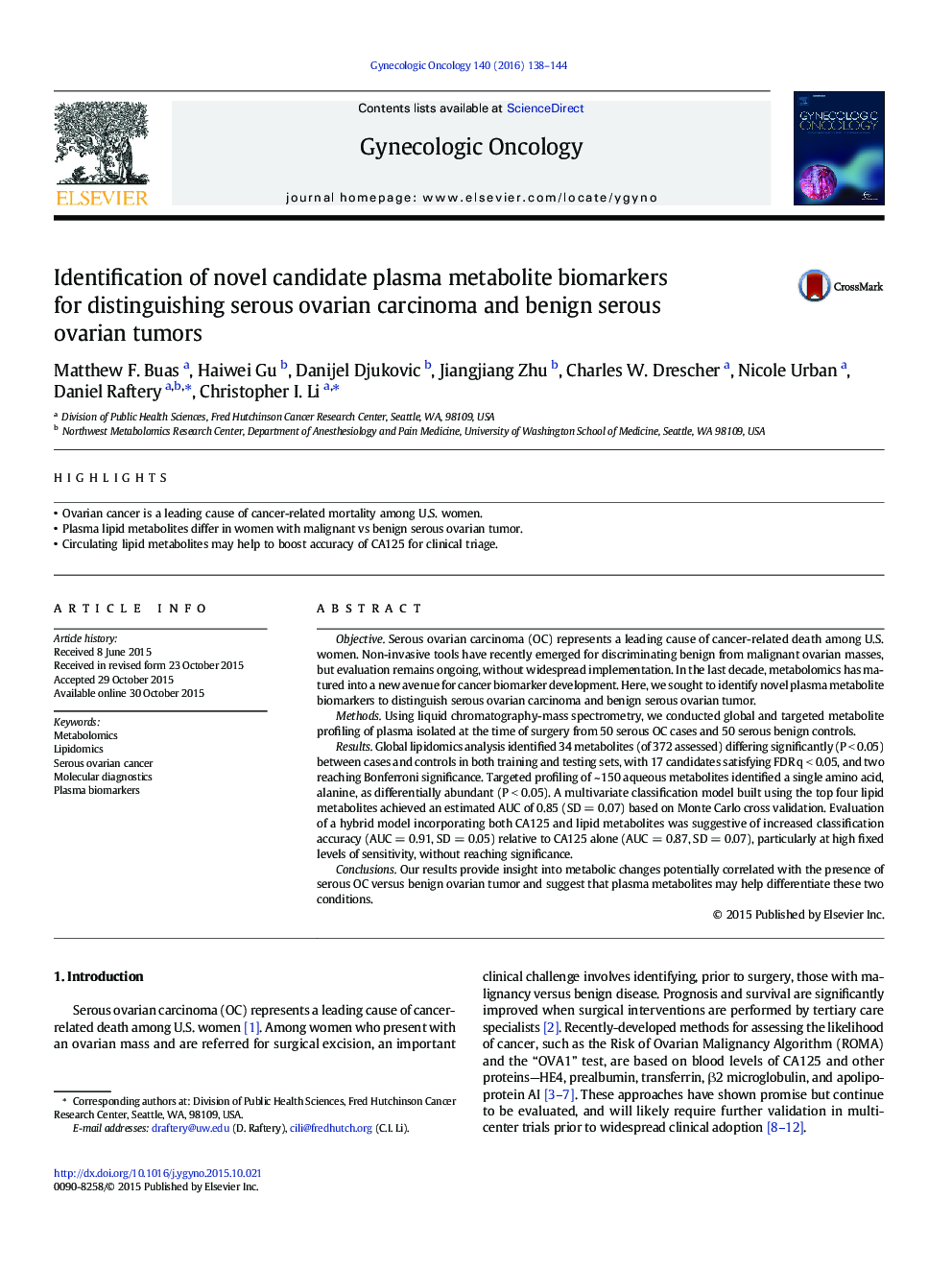| Article ID | Journal | Published Year | Pages | File Type |
|---|---|---|---|---|
| 3942525 | Gynecologic Oncology | 2016 | 7 Pages |
•Ovarian cancer is a leading cause of cancer-related mortality among U.S. women.•Plasma lipid metabolites differ in women with malignant vs benign serous ovarian tumor.•Circulating lipid metabolites may help to boost accuracy of CA125 for clinical triage.
ObjectiveSerous ovarian carcinoma (OC) represents a leading cause of cancer-related death among U.S. women. Non-invasive tools have recently emerged for discriminating benign from malignant ovarian masses, but evaluation remains ongoing, without widespread implementation. In the last decade, metabolomics has matured into a new avenue for cancer biomarker development. Here, we sought to identify novel plasma metabolite biomarkers to distinguish serous ovarian carcinoma and benign serous ovarian tumor.MethodsUsing liquid chromatography-mass spectrometry, we conducted global and targeted metabolite profiling of plasma isolated at the time of surgery from 50 serous OC cases and 50 serous benign controls.ResultsGlobal lipidomics analysis identified 34 metabolites (of 372 assessed) differing significantly (P < 0.05) between cases and controls in both training and testing sets, with 17 candidates satisfying FDR q < 0.05, and two reaching Bonferroni significance. Targeted profiling of ~ 150 aqueous metabolites identified a single amino acid, alanine, as differentially abundant (P < 0.05). A multivariate classification model built using the top four lipid metabolites achieved an estimated AUC of 0.85 (SD = 0.07) based on Monte Carlo cross validation. Evaluation of a hybrid model incorporating both CA125 and lipid metabolites was suggestive of increased classification accuracy (AUC = 0.91, SD = 0.05) relative to CA125 alone (AUC = 0.87, SD = 0.07), particularly at high fixed levels of sensitivity, without reaching significance.ConclusionsOur results provide insight into metabolic changes potentially correlated with the presence of serous OC versus benign ovarian tumor and suggest that plasma metabolites may help differentiate these two conditions.
